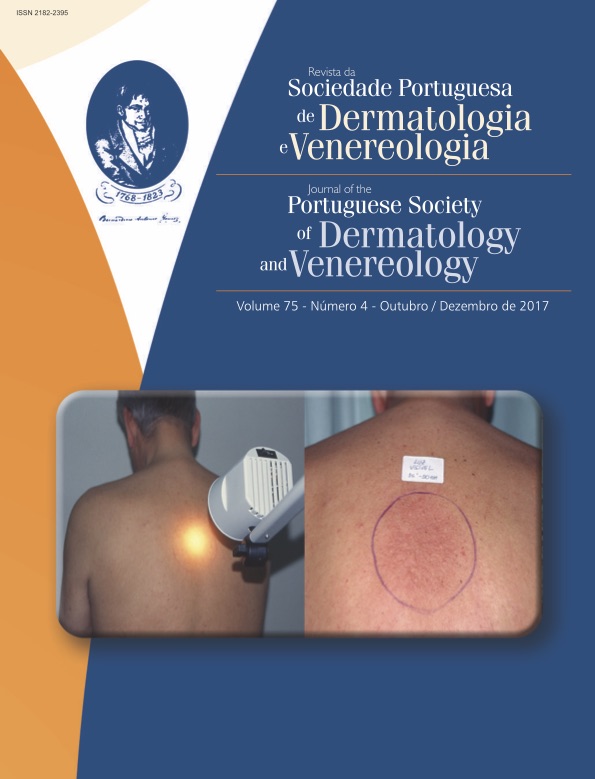Contact Dermatitis to Thiurams: A Case Report
Abstract
Thiurams are used as additives that are added to natural or synthetic latex in the manufacture of rubber products. Hypersensitivity to thiurams is a delayed type IV reaction, mediated by T lymphocytes. The authors present a case of a 9-year-old girl with recurrent episodes of edema and erythema of the eyelids, lips and perioral region, associated with eczema-like lesions, all with previous exposition to rubber materials. Epicutaneous patch test was positive for thiuram mix. With the eviction of these products the girl did not have any more lesions. Many patients referenced for contact dermatitis to rubber products are hypersensitive to rubber additives such as thiurams and carbamates and not to latex.
Downloads
References
Uter W, Hegewald J, Pfahlberg A, Lessmann H, Schnuch
A, Gefeller O. Contact allergy to thiurams: multifactorial
analyses of clinical surveillance data collected
by the IVDK network. Int Arch Occup Environ Health.
; 83:675-81.
Gaspar A, Faria E. Alergia ao látex. Rev Port Imunoalergol.
; 20: 173-92.
Sá AB, Garro LS, Fernandes FR, Rizzo MC, Sandrin
LN, Ensina LF. Recomendações para o diagnóstico de
alergia ao látex. Rev. Bras Alerg Imunopatol. 2012;
:183-9.
Cordeiro AC, Ramos L, Gonçalo M. Dermatite de
Contacto Alérgica em Idade Pediátrica: Estudo Retrospectivo.
Revista Soc Port Dermatol Venereol. 2017;
:143-52.
Schwensen JF, Menné T, Johansen JD, Thyssen JP. Contact
allergy to rubber accelerators remains prevalent:
retrospective results from a tertiary clinic suggesting an
association with facial dermatitis. J Eur Acad Dermatol
Venereol. 2016; 30:1768-1773.
Schwensen JF, Menné T, Hald M, Johansen JD, Thyssen
JP. Allergic perioral contact dermatitis caused by rubber
chemicals during dental treatment. Contact Dermatitis.
; 74:110-1.
Jacob SE, Dimson O. Focus on T.R.U.E. Test Allergen
: Thiuram. Dermatologist. 2006; 14:2.
Leis Dosil VM, Campos-Domínguez M, Zamberk-Majlis
PE, Suárez-Fernández RM, Lázaro-Ochaita P. Erythema
multiforme-like eruption due to carbamates and thiuram.
Allergol et Immunopathol. 2006; 34:121-4.
Oliveira HR, Alchorne AO. Fundamentos sobre o conhecimento
dos aditivos químicos presentes nas luvas
de borracha. An Bras Dermatol. 2011; 86:911-6.
All articles in this journal are Open Access under the Creative Commons Attribution-NonCommercial 4.0 International License (CC BY-NC 4.0).








